docking 1.10.0  docking: ^1.10.0 copied to clipboard
docking: ^1.10.0 copied to clipboard
Flutter layout for placing widgets in docking areas and arrange them into split and tabbed views.
Docking #
Layout for placing widgets in docking areas and arrange them into split and tabbed views.
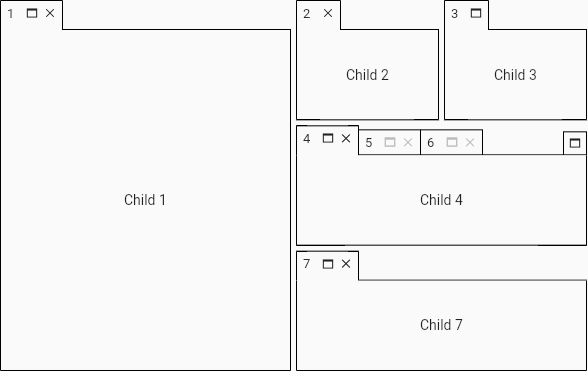
Dependencies #
The following dependencies are exported along with this package:
- tabbed_view (1.16.0) to provide grouping of widgets into tabs
- multi_split_view (2.4.0) to provide horizontal or vertical split views
Usage #
- Layout
- Item
- Size
- Docking buttons build
- State
- Theme
- Support this project
Layout #
The layout is organized into areas: items (DockingItem), columns (DockingColumn), rows (DockingRow) and tabs (DockingTabs).
The root is single and can be any area.
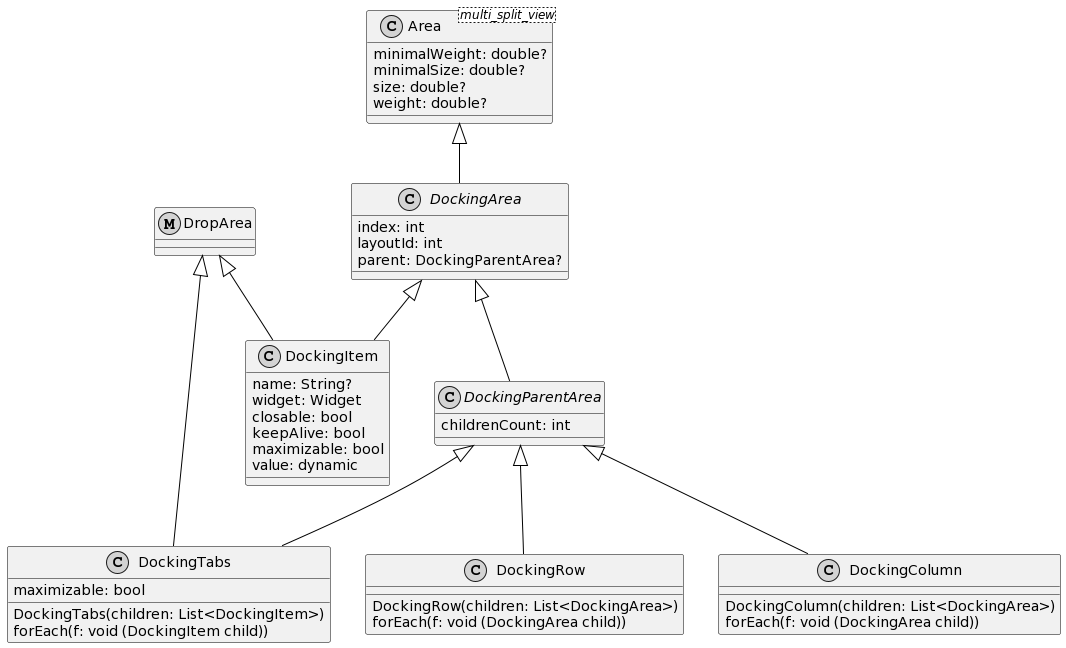
Row #
DockingLayout layout = DockingLayout(
root: DockingRow([
DockingItem(name: '1', widget: child1),
DockingItem(name: '2', widget: child2)
]));
Docking docking = Docking(layout: layout);
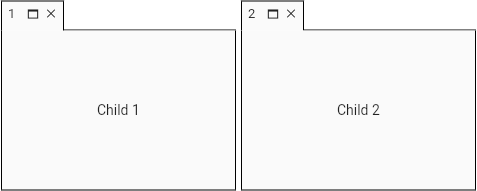
Column #
DockingLayout layout = DockingLayout(
root: DockingColumn([
DockingItem(name: '1', widget: child1),
DockingItem(name: '2', widget: child2)
]));
Docking docking = Docking(layout: layout);
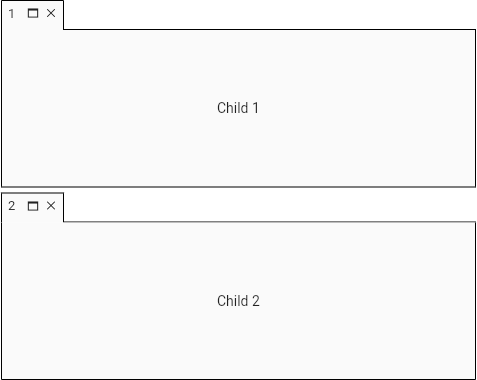
Tabs #
DockingLayout layout = DockingLayout(
root: DockingTabs([
DockingItem(name: '1', widget: child1),
DockingItem(name: '2', widget: child2)
]));
Docking docking = Docking(layout: layout);
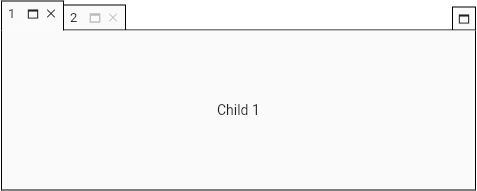
Combined #
DockingLayout layout = DockingLayout(
root: DockingRow([
DockingItem(name: '1', widget: child1),
DockingColumn([
DockingItem(name: '2', widget: child2),
DockingTabs([
DockingItem(name: '3', widget: child3),
DockingItem(name: '4', widget: child4)
])
])
]));
Docking docking = Docking(layout: layout);
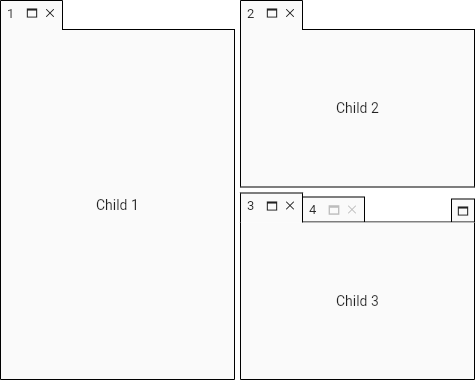
Finding DockingItem by id #
DockingItem? item = _layout.findDockingItem('id');
Item #
Non-closable #
DockingLayout layout = DockingLayout(
root: DockingRow([
DockingItem(name: '1', widget: child1),
DockingItem(name: '2', widget: child2, closable: false)
]));
Docking docking = Docking(layout: layout);
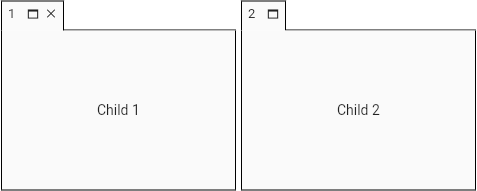
Non-maximizable #
DockingLayout layout = DockingLayout(
root: DockingRow([
DockingItem(name: '1', widget: child1),
DockingItem(name: '2', widget: child2, maximizable: false)
]));
Docking docking = Docking(layout: layout);
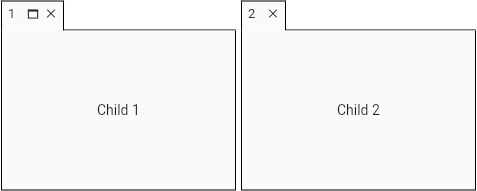
Selection listener #
DockingLayout layout = DockingLayout(
root: DockingTabs([
DockingItem(name: '1', widget: child1),
DockingItem(name: '2', widget: child2),
DockingItem(name: '3', widget: child3)
]));
Docking docking = Docking(
layout: layout,
onItemSelection: (DockingItem item) {
print(item.name!);
});
Close listener #
DockingLayout layout = DockingLayout(
root: DockingRow([
DockingItem(name: '1', widget: child1),
DockingItem(name: '2', widget: child2),
DockingItem(name: '3', widget: child3)
]));
Docking docking = Docking(
layout: layout,
onItemClose: (DockingItem item) {
_onItemClose(context, item);
});
void _onItemClose(BuildContext context, DockingItem item) {
ScaffoldMessenger.of(context).showSnackBar(SnackBar(
content: Text('item ' + item.name! + ' has been closed'),
duration: const Duration(seconds: 3)));
}
Close interceptor #
DockingLayout layout = DockingLayout(
root: DockingRow([
DockingItem(name: '1', widget: child1),
DockingItem(name: '2', widget: child2)
]));
Docking docking = Docking(
layout: layout,
itemCloseInterceptor: (DockingItem item) {
return _checkItem(context, item);
});
bool _checkItem(BuildContext context, DockingItem item) {
if (item.name == '1') {
ScaffoldMessenger.of(context).showSnackBar(SnackBar(
content: const Text('item 1 can not be closed'),
duration: const Duration(seconds: 3)));
return false;
}
return true;
}
Item buttons #
import 'package:tabbed_view/tabbed_view.dart';
DockingLayout layout = DockingLayout(
root: DockingRow([
DockingItem(name: '1', widget: child1),
DockingColumn([
DockingItem(name: '2', widget: child2),
DockingItem(name: '3', widget: child3, buttons: [
TabButton(
icon: IconProvider.data(Icons.add_circle_outline),
onPressed: () => _toast(context, 'add button')),
TabButton(
icon: IconProvider.data(Icons.arrow_drop_down_outlined),
menuBuilder: (context) {
return [
TabbedViewMenuItem(
text: 'Option 1',
onSelection: () => _toast(context, '1')),
TabbedViewMenuItem(
text: 'Option 2', onSelection: () => _toast(context, '2'))
];
})
])
])
]));
Docking docking = Docking(layout: layout);
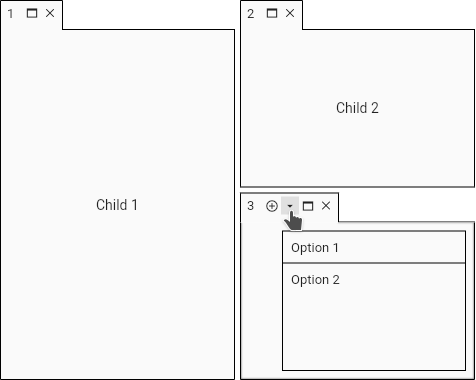
Item leading widget #
DockingLayout layout = DockingLayout(
root: DockingRow([
DockingItem(
name: '1',
widget: child1,
leading: (context, status) => Icon(Icons.star, size: 16)),
DockingItem(name: '2', widget: child2)
]));
Docking docking = Docking(layout: layout);

Changing attributes #
DockingItem? item = _layout.findDockingItem('id');
if (item != null) {
Random random = Random();
item.name = random.nextInt(9999).toString();
_layout.rebuild();
Size #
Minimal size #
DockingLayout layout = DockingLayout(
root: DockingRow([
DockingItem(name: '1', minimalSize: 200, widget: child1),
DockingItem(name: '2', widget: child2)
]));
Initial size #
DockingLayout layout = DockingLayout(
root: DockingRow([
DockingItem(name: '1', size: 100, widget: child1),
DockingItem(name: '2', widget: child2)
]));
Initial weight #
DockingLayout layout = DockingLayout(
root: DockingRow([
DockingItem(name: '1', weight: .2, widget: child1),
DockingItem(name: '2', widget: child2)
]));
Docking buttons build #
DockingLayout layout = DockingLayout(
root: DockingRow([
DockingItem(name: '1', widget: child1),
DockingTabs([
DockingItem(name: '2', widget: child2),
DockingItem(name: '3', widget: child3)
])
]));
Docking docking =
Docking(layout: layout, dockingButtonsBuilder: _buttonsBuilder);
List<TabButton> _buttonsBuilder(BuildContext context,
DockingTabs? dockingTabs, DockingItem? dockingItem) {
if (dockingTabs != null) {
// docking area is a DockingTabs
return [
TabButton(
icon: IconProvider.data(Icons.tag_faces_outlined),
onPressed: () => print('Smile!'))
];
}
// docking area is a DockingItem
return [
TabButton(
icon: IconProvider.data(Icons.access_time),
onPressed: () => print('Time button!'))
];
}
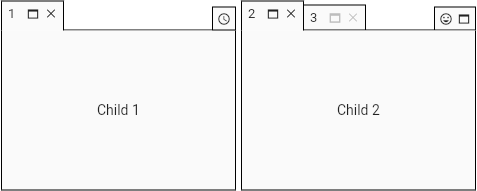
State #
The drag action can change the tree structure due to a new arrangement of rows, columns or tabs. The keepAlive parameter keeps the state during the layout change. This feature implies using GlobalKeys and keeping the widget in memory even if the tab is not selected.
DockingItem(name: 'myStatefulWidget', widget: myStatefulWidget, keepAlive: true);
Theme #
Divider theme #
You should use the MultiSplitViewTheme widget to apply the theme to all descendant widgets.
Read more information about themes on multi_split_view.
DockingLayout layout = DockingLayout(
root: DockingRow([
DockingItem(name: '1', widget: child1),
DockingColumn([
DockingItem(name: '2', widget: child2),
DockingItem(name: '3', widget: child3)
])
]));
Docking docking = Docking(layout: layout);
MultiSplitViewTheme theme = MultiSplitViewTheme(
child: docking,
data: MultiSplitViewThemeData(
dividerThickness: 15,
dividerPainter: DividerPainters.grooved2(
backgroundColor: Colors.grey[700]!,
color: Colors.grey[400]!,
highlightedColor: Colors.white)));
Container container = Container(
padding: EdgeInsets.all(16),
child: theme,
color: Colors.grey[700]!,
);
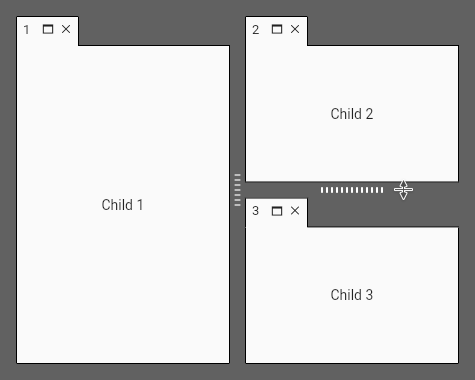
Tabs theme #
You should use the TabbedViewTheme widget to apply the theme to all descendant widgets.
Read more information about themes on tabbed_view.
DockingLayout layout = DockingLayout(
root: DockingRow([
DockingItem(name: '1', widget: child1),
DockingTabs([
DockingItem(name: '2', widget: child2),
DockingItem(name: '3', widget: child3)
])
]));
Docking docking = Docking(layout: layout);
TabbedViewTheme theme =
TabbedViewTheme(child: docking, data: TabbedViewThemeData.mobile());
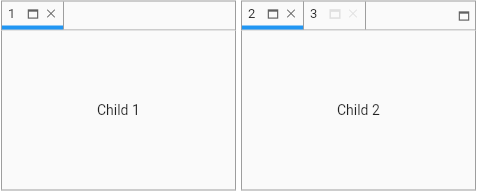
Support this project #
Bitcoin #
bc1qhqy84y45gya58gtfkvrvass38k4mcyqnav803h
Ethereum (ERC-20) or Binance Smart Chain (BEP-20) #
0x9eB815FD4c88A53322304143A9Aa8733D3369985
Solana #
7vp45LoQXtLYFXXKx8wQGnzYmhcnKo1TmfqUgMX45Ad8



